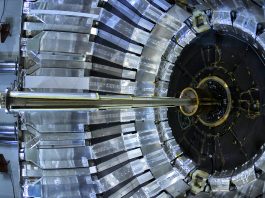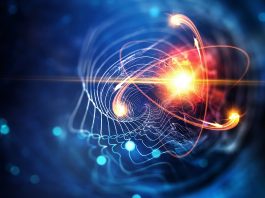Researchers from Hokkaido University have detailed new insights into neutrino interactions, which revealed they interact unexpectedly with photons under extreme conditions.
Neutrino interactions also occur in the fundamental particles of light and other electromagnetic radiation, which has not been previously detected.
Kenzo Ishikawa, first author of the study, said: “Our results are essential for understanding the quantum mechanical interactions of some of the most fundamental particles of matter.
“They may also help reveal details of currently poorly understood phenomena in the Sun and other stars.”
The research, ‘Topological interaction of neutrinos with photons in a magnetic field — Electroweak Hall effect,’ was published in Physics Open.
Why are neutrinos so difficult to study?
Neutrinos are one of the most mysterious fundamental particles of matter. They are extremely difficult to study because neutrino interactions with other particles barely occur.
They are electrically neutral and have almost no mass; however, they are still highly abundant and constantly stream through Earth.
Discovering more about neutrino interactions is important for testing and refining our understanding of particle physics, known as the Standard Model.
What did the study reveal about neutrino interactions?
“Under normal ‘classical’ conditions, neutrinos will not interact with photons,” explained Ishikawa.
“However, we have revealed how neutrinos and photons can be induced to interact in the uniform magnetic fields of the extremely large scale found in plasma, which occurs around stars.”
Since plasma is an ionised gas, it means that all of its atoms have acquired either an excess or a deficiency of electrons, making them negatively or positively charged ions rather than the neutral atoms that can occur under everyday conditions on Earth.
The neutrino interactions observed by the researchers involve a theoretical phenomenon called the electroweak Hall effect. This is an interaction of electricity and magnetism under extreme conditions where two of the fundamental forces of nature merge into the electro-weak force.
It is a theoretical concept expected to apply only in the very high energy conditions of the early Universe or within collisions in particle accelerators.
The research has derived a mathematical description of these unexpected neutrino interactions, known as the Lagrangian. This describes everything known about the energy states of the system.
“In addition to its contribution to our understanding of fundamental physics, our work might also help explain something called the solar corona heating puzzle,” said Ishikawa.
“This is a long-standing mystery concerning the mechanism by which the Sun’s outermost atmosphere is at a much higher temperature than its surface. Our work shows that neutrino interactions liberate energy that heats up the solar corona.”
He concluded: “We hope to continue our work in search of deeper insights, especially in connection with energy transfer between neutrinos and photons under these extreme conditions.”









